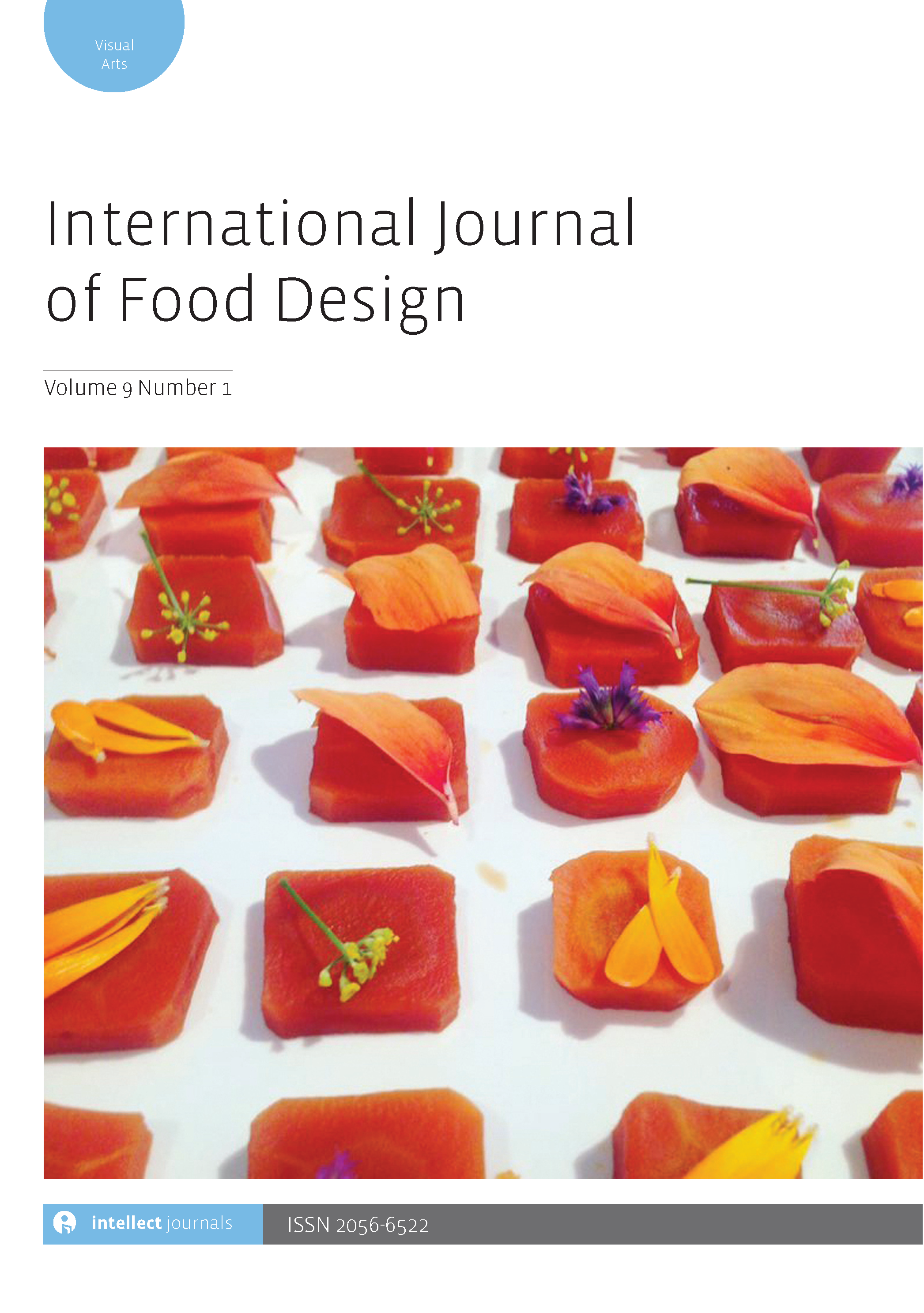-
oa Design and ‘umamification’ of vegetable dishes for sustainable eating
- Source: International Journal of Food Design, Volume 5, Issue 1-2: Creative Tastebuds 2020, Dec 2020, p. 9 - 42
-
- 09 Jun 2020
- 31 Aug 2020
- 01 Dec 2020
Abstract
Food production is a main cause of the accelerating anthropogenic changes in the Earth’s ecosystems. There is an urgent need for global changes in the food production systems throughout the food chain as well as a call for a significant reduction in food waste. Sustainable and healthy eating has hence become a key issue on the global scene. The provision for a sustainable green transition involves eating more plant-based foods. The question then arises if such foods, e.g. vegetables, are sufficiently palatable for the carnivorous human whose evolution has been driven by meat-eating and a craving for umami taste for more than two million years. Is green food sufficiently delicious for us to eat more of it? This article describes an approach to sustainable eating of vegetables based on a combination of gastrophysical insights with culinary innovation and gastronomic design. Plant-based raw ingredients often lack the basic tastes umami and sweet and also need special attention regarding mouthfeel. As a result, a ‘taste rack’ of condiments, a kind of generalized spice rack or tasting inventory, which allows most vegetables to be turned into delicious dishes by ‘umamification’ and used effectively in a flexitarian setting, is developed. The power of the approach is illustrated by a number of case studies.
Funding
- The Nordea Foundation



